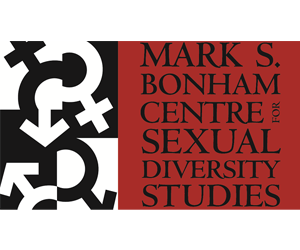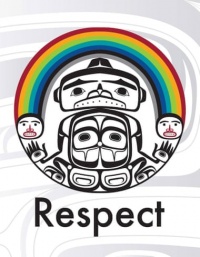Guest Commentary
PLEASE NOTE: Past Guest Commentary/Opinion articles can be viewed here.
Plains Cree Two Spirit People
By: Edward Lavallee, Elder, Edmonton 2 Spirit Society
I had just returned after attending the 2002 World Indigenous Peoples Conference on Education that August at the Stoney Indian Park, at Morley, Alberta when I received a call from Richard Jenkins asking if I would attend the 14th Annual International Two Spirit People Gathering as their Elder. The Alberta group were members of the Aboriginal Two Spirit Working Group of Edmonton. Chief George Poitras of the Mikisew Cree Nation in Treaty 8 territory who was one of its members had been successful in bidding to host that year’s International Gathering for Canada.
These International Two Spirit Gathering have been in existence since 1988 and have been hosted by various Aboriginal Two Spirit groups throughout North America and primarily those from Canada and the United States. Two Spirit Individuals and groups in the USA are also credited with getting the movement started influenced by the Gay movement in that country. Generally, the goal of the Gathering is to provide a safe, supportive and alcohol/drug free forum and environment for indigenous Two Spirit peoples from throughout North America to explore and experience their place in Indigenous cultures and communities. A sacred fire is lit at the beginning of each Gathering maintained throughout the week and extinguished at the end to assist in activities related to keeping a spiritual connection to the Creator. Other Activities during the week include pipe ceremonies, sage/sweetgrass ceremonies, sweats, plenary sessions, concurrent workshops, talking circles, support groups, recreation events, mini-pow wow/feast and a traditional give away.
I was at the time, telling everyone, that I was an Elder in training however that week I soon was carrying out full Elder duties and thus ever since then I have been taken as the full Elder with this same Edmonton Two Spirit group. At that time the host committee had 12 members from throughout Alberta representing First Nations, Metis and Urban Aboriginal Two Spirit men, women and youth. Its chair was Chief George Poitras of the Mikisew Cree Nation. The sponsoring organization for the Gathering was the Nechi Training, Research and Health Promotions Institute of Alberta which had been in existence as not-for- profit entity since 1974. Richard Jenkins, its Director of Marketing and Health promotions applied and received funding in the amount of 45,000 dollars from the Canadian and Provincial governments. The venue for the event was at the Nakoda Lodge at Morley, Alberta.
The event was a huge success. Issues in their plenary sessions discussed pre-contact issues, colonization, residential school impacts and health leadership topics on individual health matters, HIV/AIDs, HIV and community involvement, healing, recovery, sobriety, culture and language retention or loss thereof, alcohol as an escape to dealing with sexuality, homosexuality and the Bible and its interpretations, not feeling safe in home communities, drugs, addictions, STD’s, teen pregnancy, incarcerations, family violence, smoking, racism, experiences at residential schools, intergenerational impacts of Indian residential schools, loss of dignity and self respect and their susceptibility to HIV/AIDS and finally, noting that the Gathering changed their lives. The event ended with a feast, a pow wow (where members from the local community took part) and a traditional give away.
These Gatherings are attended by members of many different Nations throughout North America since their beginning including the diverse Nations of the Cree. It is believed by the Plains Cree Two Spirit (Gay, Lesbian, Bi-Sexual, Trans-sexual, Transgender and Inter-sex) people, similar to many other Two Spirit people in other Indigenous Nations, were regarded as people placed among them for specific purpose by the Creator (God) and therefore were thought to be divine.
Two Spirit is a term some Indigenous people use to identify themselves rather than GLBTTIGG. It was adopted by delegates attending the 3rd annual International Gathering at Manitoba in 1990. Indigenous people believe that both the female and male spirits resides in the body of a Two Spirit individual and the degree of dominance of each spirit ultimately impacts the physical, emotional, mental and spiritual identity of each Two Spirit person. Many Nation people have their own beliefs and have specific names for their Two Spirit people. The Navaho call theirs Nadle, the Dakota-Winkte, The Ojibwa-Agokwa, and The Cree-Esqwaycan and so on.
They were a very important part of Cree society. They had many roles in the daily lives of their people and were respected and revered for being two spirited. They were often healers, shamans, mediators in marriage and tribal disputes, keepers of their history and their lore, and taking part and often leading in their social and Spiritual ceremonies Just like many other Indigenous Nations, Plains Cree people took and lived with same sex partners and this practice was accepted as a norm. Chiefs and their leaders had wives and often had male companions as well if they could support them. This was also the practice of females in some of their nations.
There is still today a ceremonial society called Wihtikancimoowak whose members include Two Spirit people who perform at Sundances (a four day annual Spiritual Gathering). They are known as Spirit Dancers or Contraries doing and saying things backwards as they perform in front of camp dwellings throughout the entire encampment and sometimes even are invited to dance in the main Sundance Lodge. At these times everyone must not look upon them as they are considered sacred spirits.
The belief that Cree Two Spirit people are special is epitomized in the existence of a powerful Two Spirit, Spirit, known as Qweskicanskew in their spirituality, who they believe, turns things around for the good and well-being of humanity and for all things on Earth. This important Deity is called upon in prayers for help, protection and blessings. All members of the Cree Nation who practiced Aboriginal Spirituality used to pray to this Spirit: however due to the negative influence of Christianity, this Spirit has almost been forgotten. This fact may be reversed in the future as Indigenous people are reminded about this important Deity in their Spirituality. Two Spirit songs are still known and sung today.
Today Plains Cree Two Spirit people who are often marginalized in modern day society can be found in all walks of life. They are educators, professional government civil servants, Chiefs and other politicians, writers and actors, and generally are a part of their communities on reserves and in most cases in urban centres across Canada. They are emerging from their long decades of oppression and most of all becoming decolonized working towards re-establishing their rightful roles in their communities as they go through their period of rediscovery. They are working to be recognized, respected and engaged within indigenous communities and in society in general.
In some places, mostly in urban centres, they have created their own organizations to assist in this modern day movement towards self- development and recognition with the assistance of the technological age. They are sponsoring forums and gatherings to promote healing and to create healthy environments. As a result they are being heard in small instances at present but as their movement becomes stronger they hope they will gain and retain their lost and rightful roles.
About our group in Edmonton, in 2003, when we were still known as the Aboriginal Two Spirit Working Group, we were affiliated and worked with the Gay and Lesbian Community Centre of Edmonton. Working again with the Nechi Institute we co-hosted the first Canadian Forum on Two Spirit Peoples and Health. That forum brought together eighty-two participants from various regions of Canada to discuss HIV-AIDS and other health issues facing Two Spirit people. Two key areas examined were those involving Corrections and Addictions. Other concerns, such as human rights, mental health, youth concerns and societal views on homosexuality were discussed. Again the Nechi Institute played a pivotal role in administering the secured dollars resulting in a successful event. A full report of the forum is available but not on line. Also a video of the event was made and produced and is available on U-tube. In 2003 the group incorporated as the Two Spirit Circle of Edmonton Society. It co-hosted, with the Nechi Institute again, a Two Spirit Gathering with Alberta Elders to learn teachings on the Protocols of the different uses of Tobacco in the various Aboriginal ceremonies as practiced by Cree people on the Plains. It had been decided that their Two Spirit members should know these teachings as part of their education on Two Spirit Practices.
Members of the Society had long realized that they must learn as much about their culture that they did not know if they were to begin and attempt to carry out their roles as Two Spirit people. Many did not know the ceremonies now practiced by their people, even those members that came from their reserve communities. Much of that part of their culture had long been lost as a result of the destructive influence of the State and Church in their lives since contact and more especially of the roles of Two Spirit people which were practically obliterated throughout the Americas.
In 2004 the Leaders of Two Spirit Circle of Edmonton Society decided they must begin teaching its members about their Culture with the help of Aboriginal Elders and with education resources known to exit about their culture. For four years they held week long Two Spirit Tipi Gatherings at the Nechi cultural grounds in St. Albert, Alberta. Both Female and Male Elders were hired to conduct known teachings on the ceremonial practices that take place during the different seasons, known Aboriginal health medicines and their uses and some ceremonial songs. They were taught how to conduct naming and transfer ceremonies. Elder Leonard Saddleback of Maskwacis was one of their main supporters since its beginning and gave them credit as a cultural emerging group on the international scene when he travelled with them to a Two Spirit Gathering to Tulsa Oklahoma, to assist in conducting spiritual ceremonies at that Gathering. He also gave the Society Three ceremonial Pipes so the Society could start conducting their own pipe ceremonies.
Since then the Society has presented at Aboriginal Education conferences and to Schools in Alberta about Two Spirit people and their issues. They have written and helped produce a resource booklet with the Alberta Teachers Association to assist in the care and understanding of Two Spirit Youth in the schools in Alberta.
So the work of the Cree and other Indigenous Two Spirit people is being carried out as a testament of their desired goal of attaining their roles of the past as much as they can.
Edward Lavallee is a traditional Plains Nehiyaw (Cree) of the Sturgeon Lake First Nation in Saskatchewan. He attended the University of Saskatchewan and has worked as co-editor of the Native People newspaper, published by the former Alberta Native Communication Society, now the Aboriginal Multi-Media Society of Alberta. He has studied Aboriginal history, spirituality and philosophy with elders during a five- year stint at the Indian Cultural College, now affiliated with the First Nations University of Saskatchewan. He has worked with Aboriginal organizations across Canada and for federal and provincial governments in various management positions. Presently he volunteers as an Indigenous Advisor and Elder in Edmonton and sits on the Board of Directors of several Edmonton organizations.
See Also
Past Guest Commentary/Opinion articles can be viewed here.

